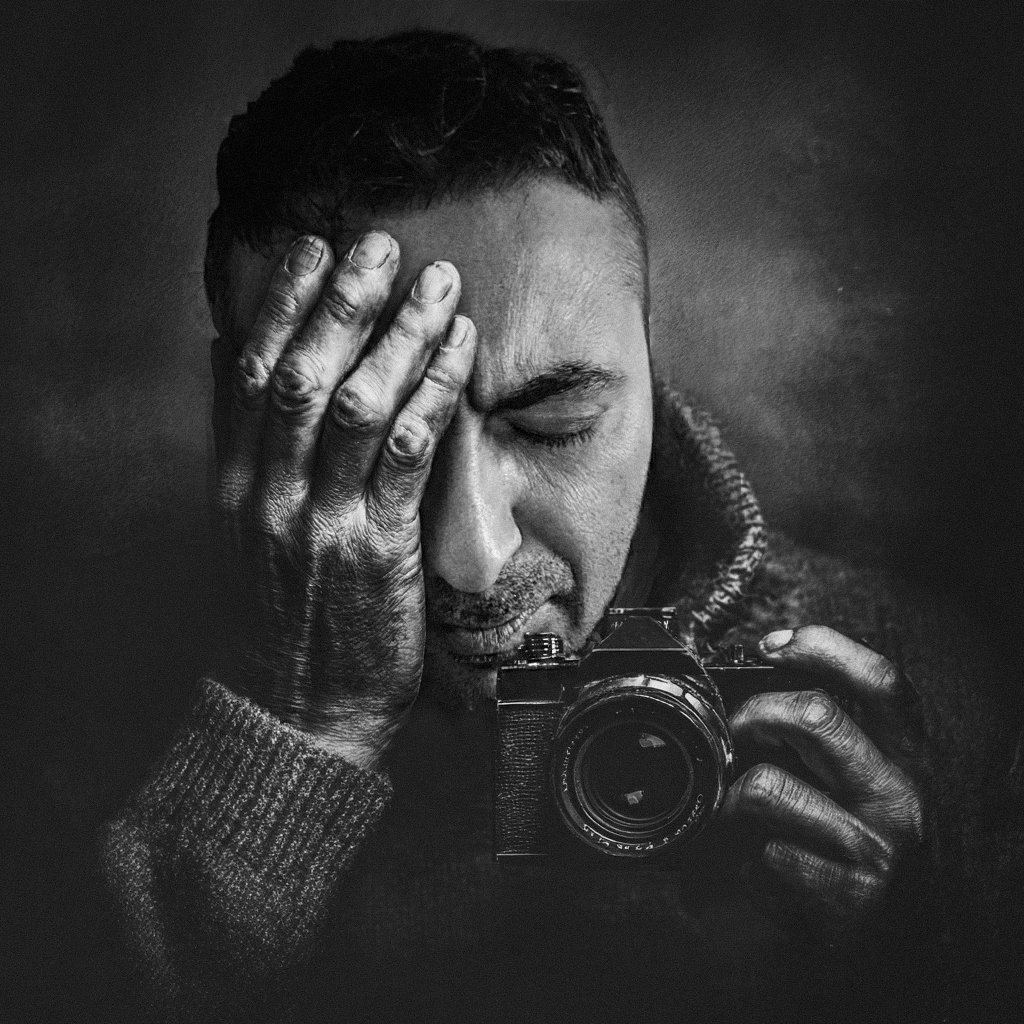
Hello!
My name is Marco Antonio P.R.
I am a young digital artist, I live in Spain and this is my official website where you can find a sample of my latest creative works.
These images place intension two ways of seeing: the hyperreal tactility of skin—every crease, everypore against the mechanical abstraction of the gaze, pixelated and neutralized. Philosophically, they speak of how memory and identity fragment in the digital age: the face preserves the history of the body, while the eyes “the classic window of the subject” are encrypted, protected, orerased. It is are flection on visibility and invisibility: to be seen in detail does not necessarily meant o be recognized.
The work recovers the tradition of documentary portraiture—the meticulous attention to the body and its marks, inherited from 20th “century photography” and fuses it with a contemporary digital aestheticth at challenges the very technology of the image. The strong lighting and sculptural volumes evoke the heritage of Rembrandt’s chiaroscuro, while the expressive force of the aged face resonates with painters such as Lucian Freud, and the social portraiture of Dorothea Lange and August Sander. At the sametime, the intervention of pixelation and digital distortion anchors the piece in the lineage of Glitch Art and contemporary digital practices: technology not only records but also operates as metaphor “censorship, anonymity, error, orprotection” over identity. As a whole, the work dialogues with the history of portraiture (from classical painting to documentary photography) and with current debates about data, privacy, and human dignity in images. Figures like Diane Arbus or Cindy Sherman echo in the thematic background “the exploration of otherness, intimacy, and performativity” while pixelation situates the artwork within the technological questioning of contemporary vision.
Author: Marco Antonio P.R.
If you like this and more of my artwork visit my portfolio.
September 19, 2025